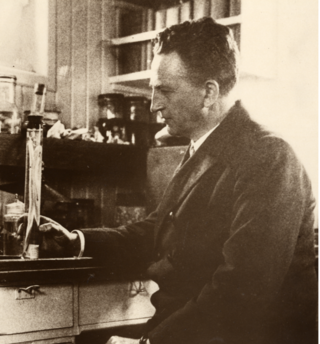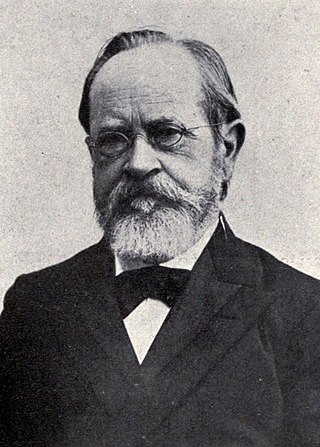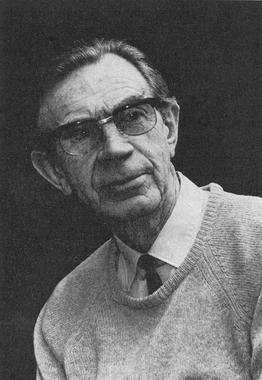Related Research Articles

Johannes Eugenius Bülow Warming, known as Eugen Warming, was a Danish botanist and a main founding figure of the scientific discipline of ecology. Warming wrote the first textbook (1895) on plant ecology, taught the first university course in ecology and gave the concept its meaning and content. Scholar R. J. Goodland wrote in 1975: “If one individual can be singled out to be honoured as the founder of ecology, Warming should gain precedence”.

Johannes Theodor Reinhardt was a Danish zoologist and herpetologist. He was the son of Johannes Christopher Hagemann Reinhardt.

Ernst Johannes Schmidt was a Danish biologist credited with discovering in 1920 that European eels migrate to the Sargasso Sea to spawn. Before this people in North America and Europe had wondered where the small glass eels, or elvers, came from.

Carl Emil Hansen Ostenfeld was a Danish systematic botanist. He graduated from the University of Copenhagen under professor Eugenius Warming. He was a keeper at the Botanical Museum 1900–1918, when he became professor of botany at the Royal Veterinary and Agricultural University. In 1923, by the early retirement of Raunkiær's, Ostenfeld became professor of botany at the University of Copenhagen and director of the Copenhagen Botanical Garden, both positions held until his death in 1931. He was a member of the Royal Danish Academy of Sciences and Letters and served on the board of directors of the Carlsberg Foundation.
Ove Vilhelm Paulsen was a Danish botanist.

Morten Pedersen Porsild was a Danish botanist who lived and worked most of his adult life in Greenland. He participated in expeditions to Greenland in 1898 and 1902, together with the physiologist August Krogh. In 1906, he founded the Arctic Station in Qeqertarsuaq, West Greenland, since 1956 part of the University of Copenhagen. He got support from famous polar researchers like Knud Rasmussen, Mylius-Erichsen and Fridtjof Nansen. A private person donated the building and running cost were put directly on the Danish state budget. Morten Porsild managed the station for forty years. He received the Hans Egede Medal in 1921. In 1946, he returned to Copenhagen, and was succeeded as station head by Paul Gelting. He was the father of Alf Erling Porsild, Robert Thorbjørn Porsild, Asta Irmelin "Tulle" Egede and Ove Sten Porsild.
Fredrik Christian Emil Børgesen was a Danish botanist and phycologist. He graduated in botany from the University of Copenhagen and was subsequently employed as an assistant at the Botanical Museum (1893–1900). His doctoral thesis dealt with the marine algae of the Faroe Islands (1904). Later, he became librarian at the Library of the Botanical Garden (1900–1935).

Frederik Georg Emil Rostrup was a Danish botanist, mycologist and plant pathologist.

Thorvald (Thorwald) Julius Sørensen was a Danish botanist and evolutionary biologist.
Christian Erasmus Otterstrøm (Otterström) Jensen (1859–1941) was a Danish pharmacist and botanist, for decades a leading bryologist in Scandinavia. He studied botany and pharmaceutics at the University of Copenhagen and the Pharmaceutical College in Copenhagen. For the better part of his adult life, he ran a pharmacy in Hvalsø, Denmark, while devoting all available time to the study of mosses.

Gunnar Seidenfaden was a Danish diplomat and botanist. He was Danish ambassador in Thailand 1955–1959, and in the U.S.S.R. 1959–1961. He was an expert on Southeast Asia Orchidaceae. He published several multi-volume works on orchids, e.g. The Orchids of Thailand – A Preliminary List and Orchid Genera in Thailand vol. I- XIV. These works are strictly taxonomic and floristic, but decorated with Seidenfaden's own drawings of flower parts as seen under the dissection microscope. His collection of more than 10,000 specimens was donated to the University of Copenhagen, together with original drawings by Katja Anker and others.
The Hovgaard Islands are a Canadian Arctic island group in the Kitikmeot Region of Nunavut Territory. They were named after Andreas Hovgaard, a Polar explorer and officer of the Danish Navy who led an expedition to the Kara Sea on steamship Dijmphna in 1882–83.
Count Eigil Knuth was a Danish explorer, archaeologist, sculptor and writer. He is referred to as the Nestor of Danish polar explorers. His archaeological investigations were made in Peary Land and adjacent areas of High Arctic Greenland. Knuth was made a Knight of the Dannebrog.

Carl Hartvig Ryder was a Danish naval officer and Arctic explorer.

Morten Wormskjold was a Danish botanist and explorer. He collected plants in Greenland and Kamchatka. The standard author abbreviation Wormsk. is used to indicate this person as the author when citing a botanical name.

Johan Theodor Holmskiold was a Danish noble, botanist, courtier and administrator. He was noted for his scientific work with fungi and development of the Charlottenborg Botanical Garden. His career included work as director of the Danish Postal Services and the Royal Porcelain Factory.
Effie Almira Southworth Spalding (1860–1947), was an American botanist and mycologist, and the first woman plant pathologist hired by the United States Department of Agriculture (USDA). Her most important discovery was the 1887 identification of the fungus Colletotrichum gossypii as the cause of cotton cankers, a disease which killed thousands of acres of cotton and was a major economic threat. She taught botany at several institutions, worked at the Desert Botanical Laboratory with her husband, and established the Botany Department Herbarium at the University of Southern California.

Hovgaard Island is a large uninhabited island of the Greenland Sea, Greenland. The island was named after Andreas Hovgaard, a Polar explorer and officer of the Danish Navy who led an expedition to the Kara Sea on steamship Dijmphna in 1882–83.

The Princess Caroline-Mathilde Alps are a mountain range system in the Holm Land Peninsula, King Frederick VIII Land, northeastern Greenland. Administratively this range is part of the Northeast Greenland National Park zone.

Dijmphna was as schooner-rigged steamship, built in 1871 in Sweden and named Linköping. During her first years Linköping sailed as a merchant in the North Sea and the Baltic but was sold in 1882 to the wealthy coffee trader and businessman Antoine Cyrille Frederik Gamél in Copenhagen. The ship was renamed Dijmphna in memory of Gamèl's mother, Maria Dijmphna Verves, reinforced for sailing in ice and equipped as polar expedition vessel, all paid for by Gamèl.
References
- ↑ "Holm, Herman Theodor". The International Who's Who in the World. 1912. p. 608.
- ↑ "Holm, Herman Theodor (1854-1932)". JSTOR Global Plants. JSTOR 000003716.
{{cite journal}}: Cite journal requires|journal=(help) - ↑ "First International Polar Year". NOAA Arctic Research Office. Retrieved December 25, 2015.
- ↑ Steen Hougs. "Dijmphna-expeditionen 1882-83". PBase. Retrieved December 25, 2015.
- ↑ Ryder, C. H. (1895–1925). Den Østgrønlandske Expedition udført i Aarene 1891-92 under Ledelse af C. Ryder, vol. 1-3. Meddelelser om Grønland (in Danish). Vol. 17–19.
- ↑ "Theo. Holm". Dansk Biografisk Leksikon. Retrieved December 25, 2015.
- ↑ International Plant Names Index. Holm.